Cover photo by Diana Russell.
Find the Common Citril in the FBIS database (Freshwater Biodiversity Information System) here.
Family Coenagrionidae
Identification

Near Hluhluwe, KwaZulu-Natal
Photo by Ryan Tippett
Small size
Length up to 46mm; Wingspan reaches 53mm.
Over most of its South African range The Common Citril Ceriagrion glabrum is easily recognised by virtue of it being the only small, all-orange damselfy at any given site. However, in the Lowveld and far north-eastern KwaZulu-Natal there is another similar, albeit much rarer species, the Suave Citril Ceriagrion suave. These two species can be easily confused.
They are best told apart in the hand, by examining the hind-margin of the last abdominal segment (S10). Ceriagrion glabrum has small teeth on the upper hind margin, while Ceriagrion suave lacks these teeth.
Females are overall plain greenish to yellow-brown and become progressively orange with age. They are best identified by association with the males.
Cluck here for more details on identification.
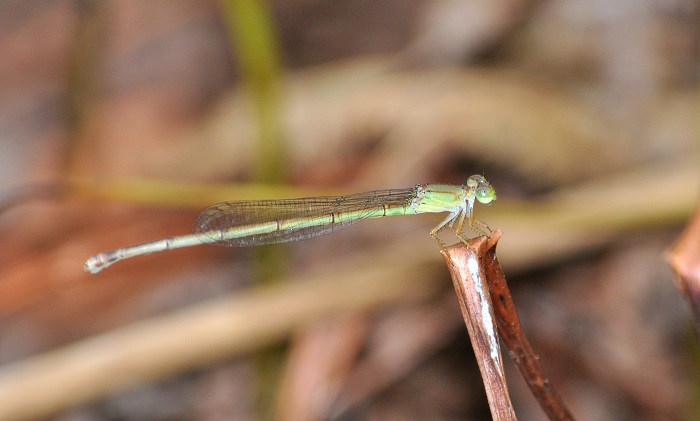
Kuleni Game Park, KwaZulu-Natal
Photo by Ryan Tippett
Habitat
The Common Citril occupies a wide range of still-water habitats, including marshes, ponds, dams, pans and the quiet backwaters of rivers and streams. It favours sites that are rich in reeds, grasses and sedges.

Photo by Ryan Tippett
Behaviour
The Common Citril sits and flies low down among the stems of reeds, grasses and sedges. It is mostly found at water but may often be found some distance away in patches of dry grass or bush. Both sexes are often seen together at the same sites.
The Common Citril is most active from October to May. It is on the wing all year round in some places (See Phenology below).
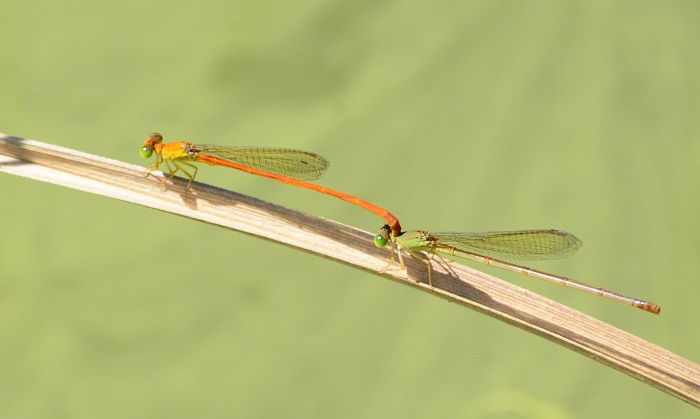
Near Hluhluwe, KwaZulu-Natal
Photo by Ryan Tippett
Status and Conservation
Ceriagrion glabrum is a common to abundant species. It is listed as of Least Concern in the IUCN Red List of Threatened Species. The Common Citril is an adaptable species that readily occupies suitable man-made habitats.
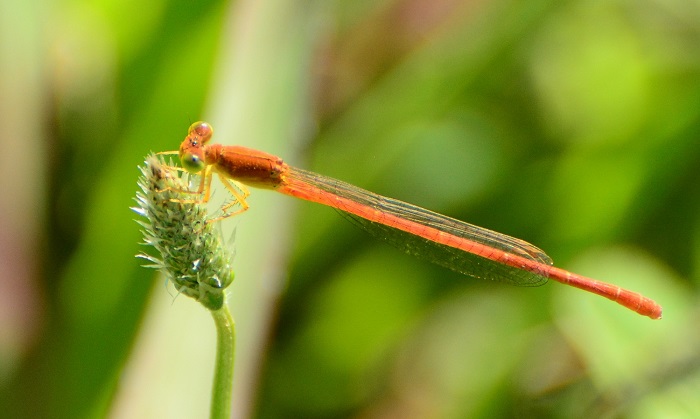
Near Wellington, Western Cape
Photo by Ryan Tippett
Distribution
The Common Citril is found virtually throughout sub-Saharan Africa. It also occurs on Madagascar and many of the Indian Ocean islands.
In South Africa the Common Citril is mainly found in the savanna regions but extends down into the Western Cape along the lower lying coastal plain.
Below is a map showing the distribution of records for Common Citril in the OdonataMAP database as at February 2020.

Below is a map showing the distribution of records for Common Citril in the OdonataMAP database as of December 2024.

The next map below is an imputed map, produced by an interpolation algorithm, which attempts to generate a full distribution map from the partial information in the map above. This map will be improved by the submission of records to the OdonataMAP section of the Virtual Museum.


Ultimately, we will produce a series of maps for all the odonata species in the region. The current algorithm is a new algorithm. The objective is mainly to produce “smoothed” maps that could go into a field guide for odonata. This basic version of the algorithm (as mapped above) does not make use of “explanatory variables” (e.g. altitude, terrain roughness, presence of freshwater — we will be producing maps that take these variables into account soon). Currently, it only makes use of the OdonataMAP records for the species being mapped, as well as all the other records of all other species. The basic maps are “optimistic” and will generally show ranges to be larger than what they probably are.
These maps use the data in the OdonataMAP section of the Virtual Museum, and also the database assembled by the previous JRS funded project, which was led by Professor Michael Samways and Dr KD Dijkstra.
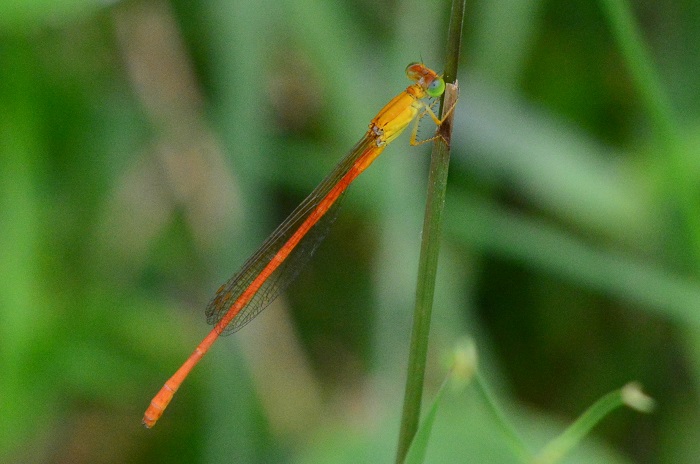
Kosi Bay, iSimangaliso Wetland Park, KwaZulu-Natal
Photo by Ryan Tippett
Phenology



False Bay, iSimangaliso Wetland Park, KwaZulu-Natal
Photo by Ryan Tippett
Further Resources
The use of photographs by Diana Russell is acknowledged. All other photographs by Ryan Tippett.
Common Citril Ceriagrion glabrum (Burmeister, 1839)
Other common names: Gewone Aljander (Afrikaans)
Recommended citation format: Loftie-Eaton M; Navarro R; Tippett RM; Underhill L. 2025. Common Citril Ceriagrion glabrum. Biodiversity and Development Institute. Available online at https://thebdi.org/2020/05/11/common-citril-ceriagrion-glabrum/
References: Tarboton, M; Tarboton, W. (2019). A Guide to the Dragonflies & Damselflies of South Africa. Struik Nature.
Samways, MJ. (2008). Dragonflies and Damselflies of South Africa. Pensoft
Samways, MJ. (2016). Manual of Freshwater Assessment for South Africa: Dragonfly Biotic Index. Suricata 2. South African National Biodiversity Institute, Pretoria
Martens, A; Suhling, F. (2007). Dragonflies and Damselflies of Namibia. Gamsberg Macmillan.
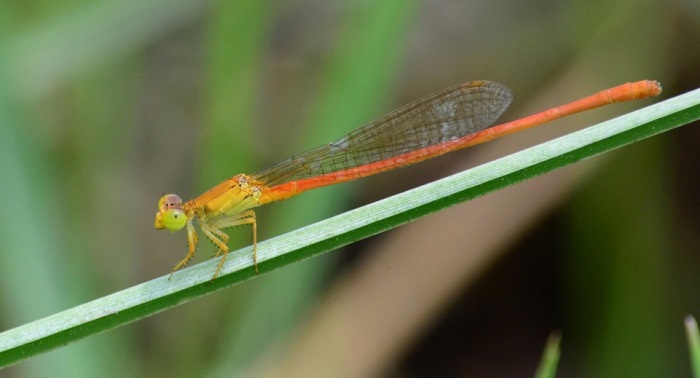
Okavango Delta, Botswana
Photo by Ryan Tippett

